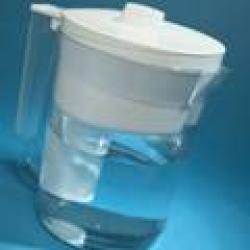Source Institutions
Source Institutions
Add to list Go to activity
Activity link broken? See if it's at the internet archive

In this activity, learners explore how engineering has developed various means to remove impurities from water. Learners work in teams of "engineers" to design and build their own "filtration system" out of everyday items. Working with "muddy" water, learners develop a design, and then build and test a system to remove as much impurities from the water as possible. Learners view their own tests and those of other teams, evaluate their results, and present findings to the group. The group with the clearest "filtered" water is considered to have developed the best filter system.
Safety note: Be sure to stress that the "filtered" water, no matter how clear, is not suitable for drinking. For younger students, do not provide charcoal as a filtration option.
Safety note: Be sure to stress that the "filtered" water, no matter how clear, is not suitable for drinking. For younger students, do not provide charcoal as a filtration option.
- 5 to 10 minutes
- 1 to 2 hours
- $10 - $20 per group of students
- Ages 8 - 18
- Activity, Lesson/Lesson Plan
- English
Quick Guide
Materials List (per group of students)
- Student Resource Sheets
- Student Worksheets
- Water basin for testing filter systems
- Supply of "muddied water" (quart of drinking water + two tablespoons of dirt)
- Measuring cups
- Plastic or paper cups
- Straws
- Cardboard
- Cotton balls
- Sand
- Aluminum foil
- Rubber bands
- Tape
- Toothpicks
- Paper towels
- Plastic wrap
- Aquarium or other small rocks
- Cornmeal
- Flour
- Other materials (such as grass or charcoal if available)
Subjects
-
Earth and Space Science
-
Earth Structure
- Oceans and Water
-
Earth Structure
-
Engineering and Technology
-
Engineering
- Environmental Engineering
- Technology
-
Engineering
-
Physical Sciences
-
Motion and Forces
- Gravity
-
Motion and Forces
-
The Nature of Science
-
Science and Society
- Risks and Benefits
-
The Scientific Process
- Conducting Investigations
- Gathering Data
- Formulating Explanations
- Communicating Results
-
Science and Society
-
The Nature of Technology
-
Technology and Society
- Impacts of Technology
- Technology and the Environment
-
The Design Process
- Research and Development
- Invention and Innovation
- Problem Solving
- Troubleshooting and Maintenance
-
Technology and Society
Informal Categories
- Nature and Environment
Audience
To use this activity, learners need to:
- see
- see color
- read
- touch
Learning styles supported:
- Involves teamwork and communication skills
- Uses STEM to solve real-world problems
- Involves hands-on or lab activities
Other
Components that are part of this resource:
Includes alignment to state and/or national standards:
This resource is part of:
Access Rights:
- Free access
By:
Rights:
- All rights reserved, IEEE,
